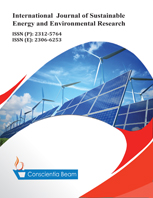Proximate composition, levels of heavy metals and their associated risk assessment in ginger (Zingiber officinale roscoe)
DOI:
https://doi.org/10.18488/13.v12i2.3585Abstract
Ginger is a medicinal plant widely used as a spice and botanically categorized in the Zingiberaceae family, Zingiber genus, and officinale species. Natural and anthropogenic sources can discharge heavy metals into the environment from which they enter the human body through food, water, air, and skin contact and cause detrimental health effects. In this study, ginger samples were randomly collected from five kebeles in Ilubabor and Bunno Bedelle zones, Southwest Ethiopia, from which a composite sample was made for analysis. Microwave-assisted digestion was carried out using concentrated nitric acid in the presence of hydrogen peroxide followed by atomic absorption spectrometer detection using different Association of Analytical Chemists, AOAC methods. Proximate analysis was performed with different standard operating procedures. The mean levels of heavy metals were 0.009 mg/kg for Arsenic, Chromium, and Lead and 0.01 mg/kg for cadmium while 578.2 mg/kg was obtained for iron. Proximate composition analysis shows 82.89%, 2.00%, 0.07%%, 1.63%, 3.42%, 9.99%, and 48.59 kcal for moisture, crude protein, crude fat, ash, crude fiber, carbohydrate, and energy, respectively. The validated method had acceptable linearity (R2 = 0.9978 - 0.9993), the limit of detection (8.18x10-5 - 0.0075), the limit of quantification (2.7x10-4 - 0.025), recovery (75 - 106.87%) and precision (4.77 - 13.97 %). The hazard index (HI) of the metals was less than one showing insignificant non-carcinogenic risk from exposure to a single or multiple possibly toxic elements from the studied ginger samples.

